
» Spotlight — Hieronymus Bosch, The Garden of Earthly Delights
The extraordinary The Garden of Earthly Delights is a large triptych, almost 13 feet (4 m) wide when fully open, that depicts Bosch's account of the world, with the Garden of Eden on the left, hell on the right, and the human world of fickle love moving toward depravity in the centre, a theatre of the frivolous pursuit of ephemeral pleasure.
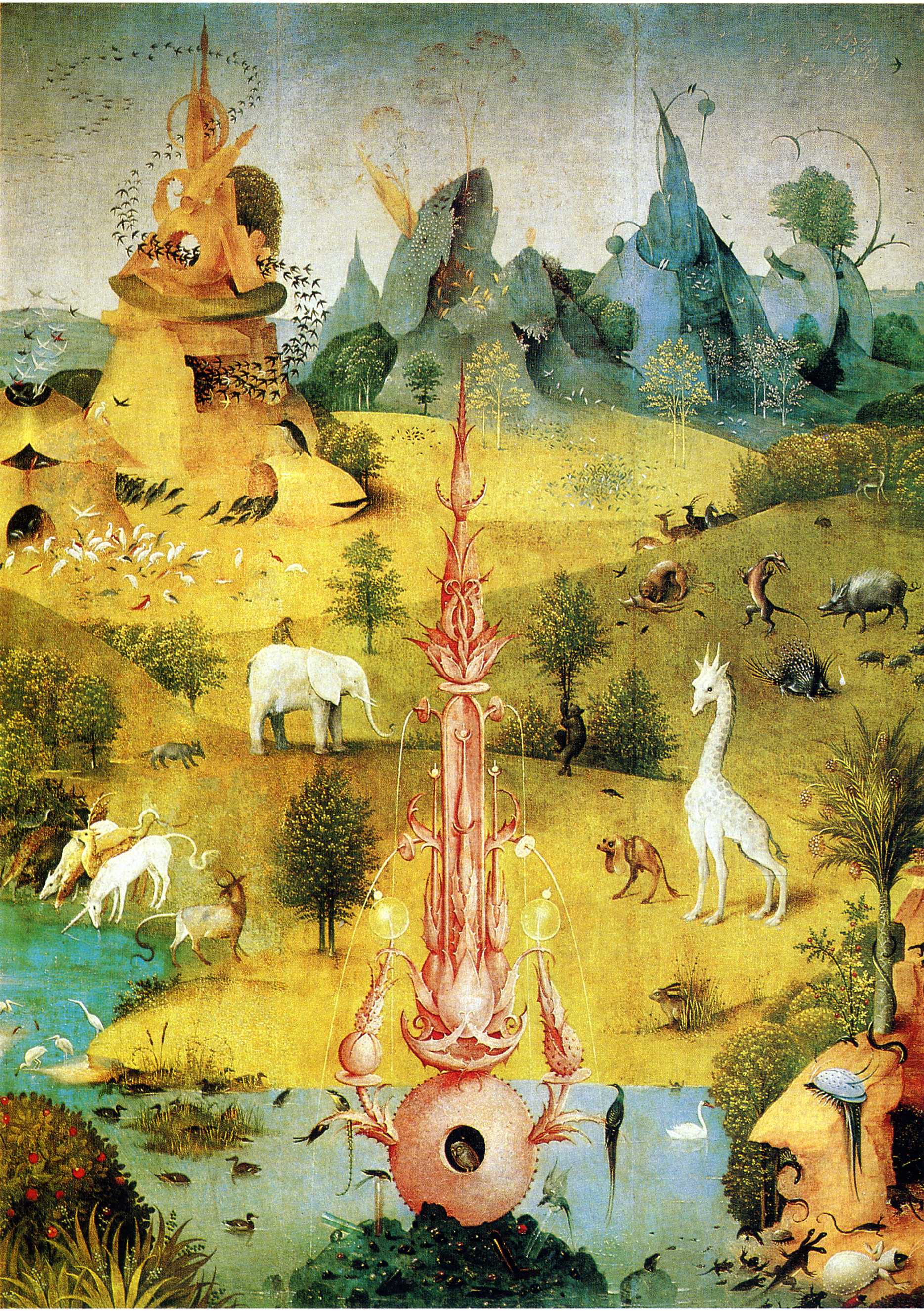
The Garden of Earthly Delights (detail), 1490 1500 Hieronymus Bosch
The Garden of Earthly Delights. Hieronymus Bosch, 1500 - 1505. Picture History. This painting is one of the most famous in the Museo del Prado, with the open triptych, or tri-fold panel, showing three scenes. The left panel is dedicated to Paradise, with the creation of Eve and the Fountain of Life, while the right panel shows Hell. The central.
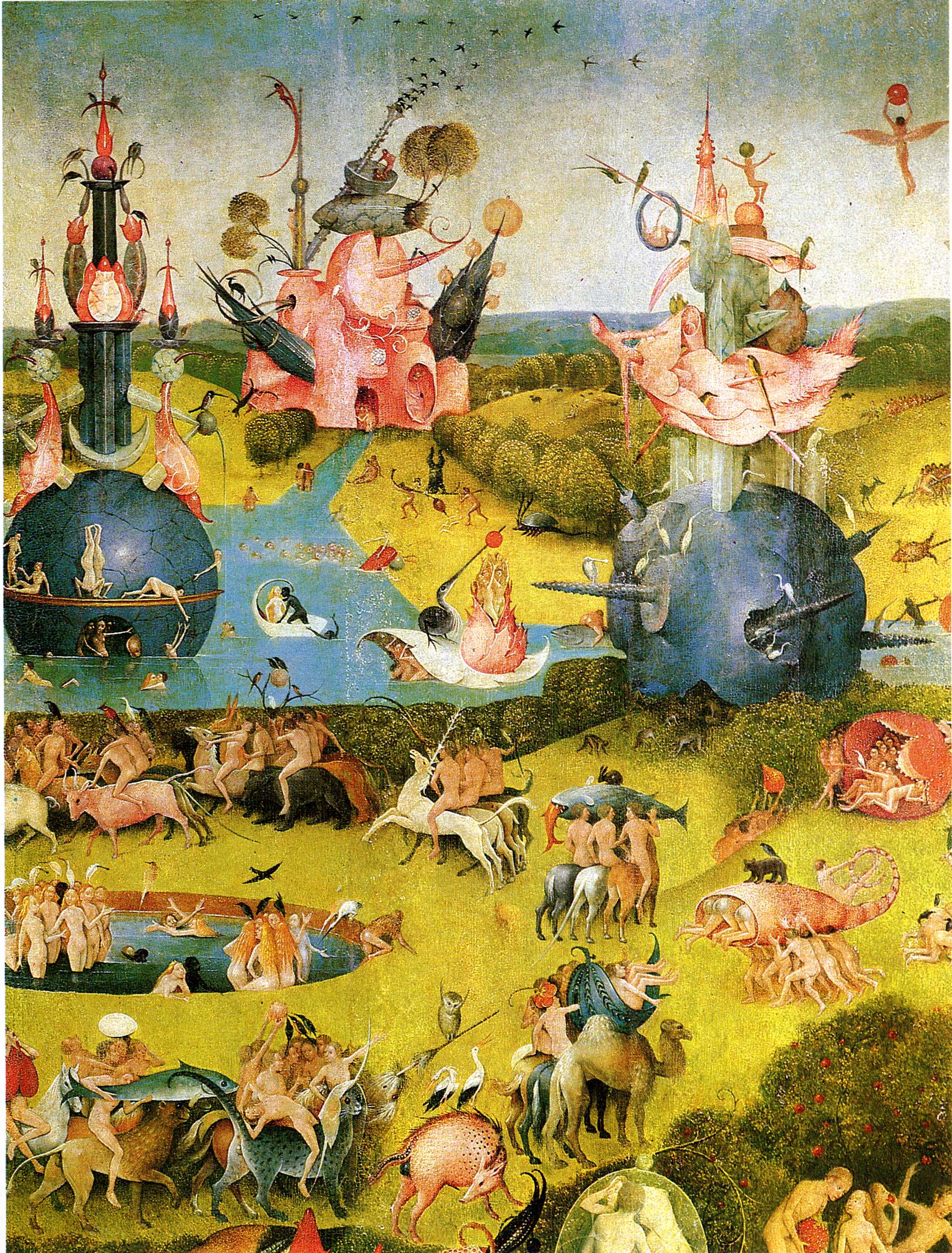
The Garden of Earthly Delights (detail), 1510 1515 Hieronymus Bosch
The Meaning of Hieronymus Bosch's. The Garden of Earthly Delights. Explained. Over the half-millennium since Hieronymus Bosch painted it, The Garden of Earthly Delights has produced an ever-widening array of interpretations. Is it "a painting about sexual freedom"?

The Garden of Earthly Delights Hieronymus bosch, Hieronymus bosch paintings, Renaissance paintings
Bosch painted The Garden of Earthly Delights using oil paint on oak panels. At the time, oil paint was still less than 100 years old. According to Giorgio Vasari in The Lives of the Artists, Flemish artist Jan Van Eyck created the technique around 1410.
Garden of Earthly Delights by Hieronymus Bosch (Looking to start up a conversation on this
To write about Hieronymus Bosch's triptych, known to the modern age as The Garden of Earthly Delights, is to attempt to describe the indescribable and to decipher the indecipherable—an exercise in madness. Nonetheless, there are a few points that can be made with certainty before it all unravels.

Pin by Virginia Hoskins on 201201 Hieronymus bosch paintings, Garden of earthly delights
What concerned Bosch, in his triptych of creation, human futility and damnation (the Garden of Earthly Delights is a modern misnomer for the work), was the essentially comic ephemerality of human life. Allow me to explain. The Outer Panels

9thegardenofearthlydelightshieronymusbosch Dasartes
Bosch's most famous and unconventional picture is The Garden of Earthly Delights (c.1500; Prado, Madrid) which, like most of his other ambitious works, is a large, 3-part altarpiece, called a triptych. This painting was probably made for the private enjoyment of a noble family. It is named for the luscious garden in the central panel, which is.

The Garden of Earthly Delights Painting by Hieronymus Bosch
This is the Garden of Earthly Delights, a fantasy riot of bizarre imagery, of giant animals, monsters cobbled together out of bits and pieces of other creatures, of all sorts of sexual escapades and gluttonies. What was Bosch saying about these pleasures? How are we to interpret the triptych, as a whole?

Hieronymus Bosch The Garden of Earthly Delights — DOP
The Garden of Earthly Delights by Jheronimus Bosch an online interactive adventure This interactive documentary is an audio- and video rich online experience for which you need to turn on your sound. Or better still: put on a headset. On a desktop or laptop computer, the website works best when viewed in Google Chrome.
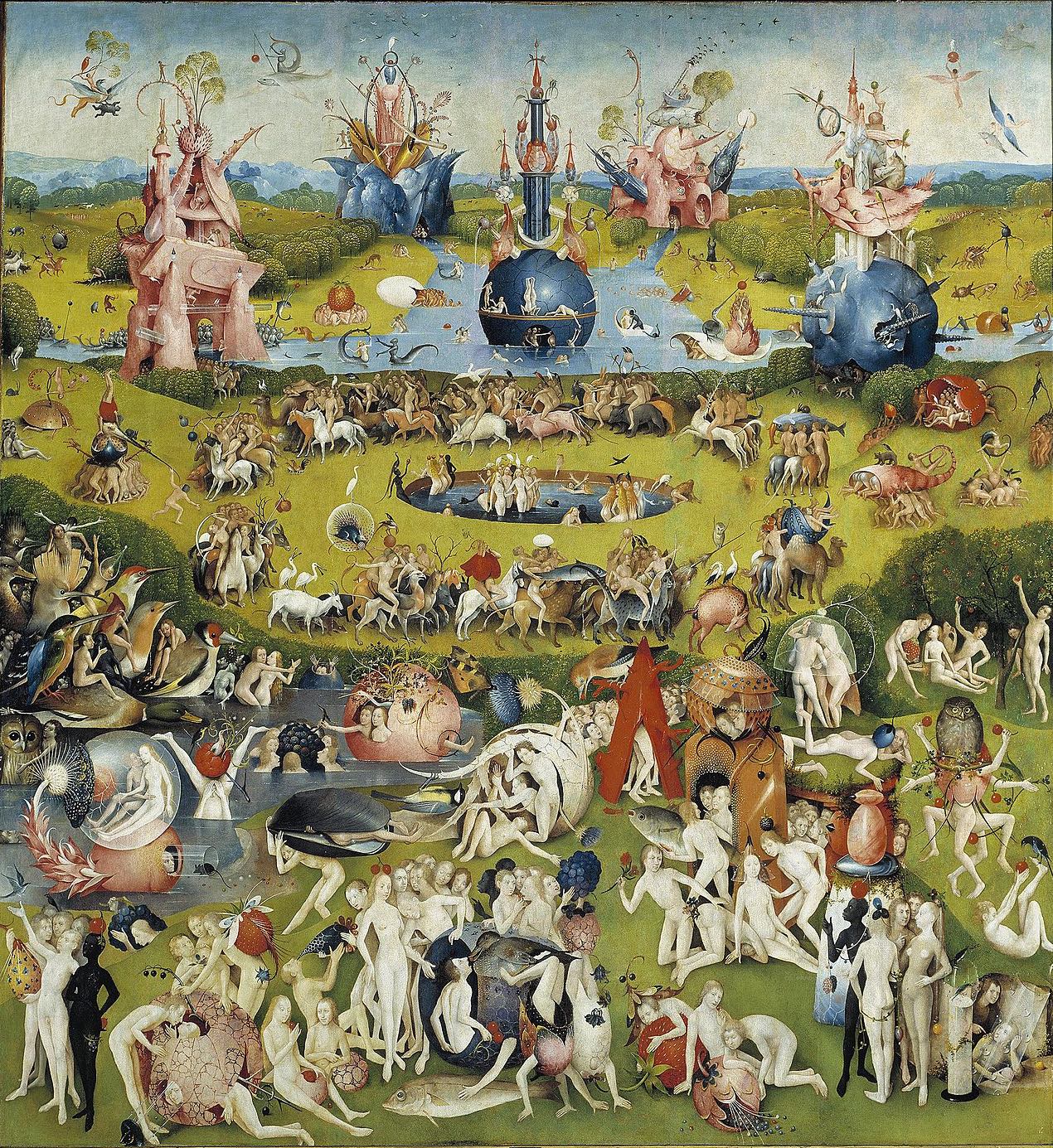
» Spotlight — Hieronymus Bosch, The Garden of Earthly Delights
The famous, or infamous, Bosch triptych The Garden of Earthly Delights (c.1480 to 1505) is a rich and enigmatic display of the Garden of Eden, the Garden of Earthly Delights, and Hell. What makes it more unique is Bosch's attention to detail and his artistic skill in rendering these obscene micro-narratives within one macro narrative, so to say.
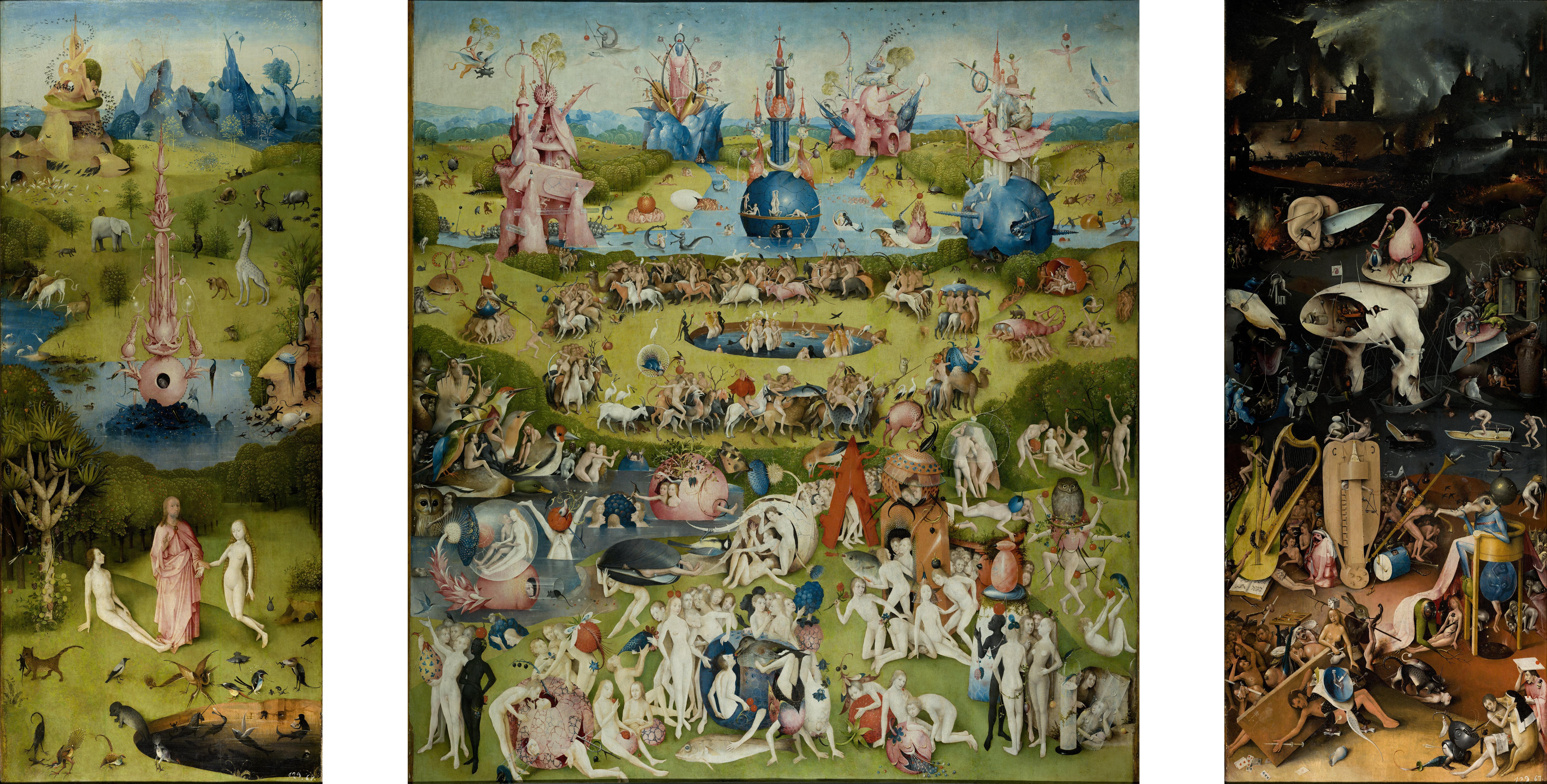
The Garden of Earthly Delights Hieronymus Bosch encyclopedia of visual arts
The Garden of Earthly Delights is one of his most famous paintings. It is a triptych depicting heaven and hell. The painting has been on display at the Prado Museum in Madrid since 1939. Bosch's Influence on 16th Century Painters Mad Meg, Pieter Bruegel The Elder, 1562, via Museum Mayer van den Bergh Get the latest articles delivered to your inbox
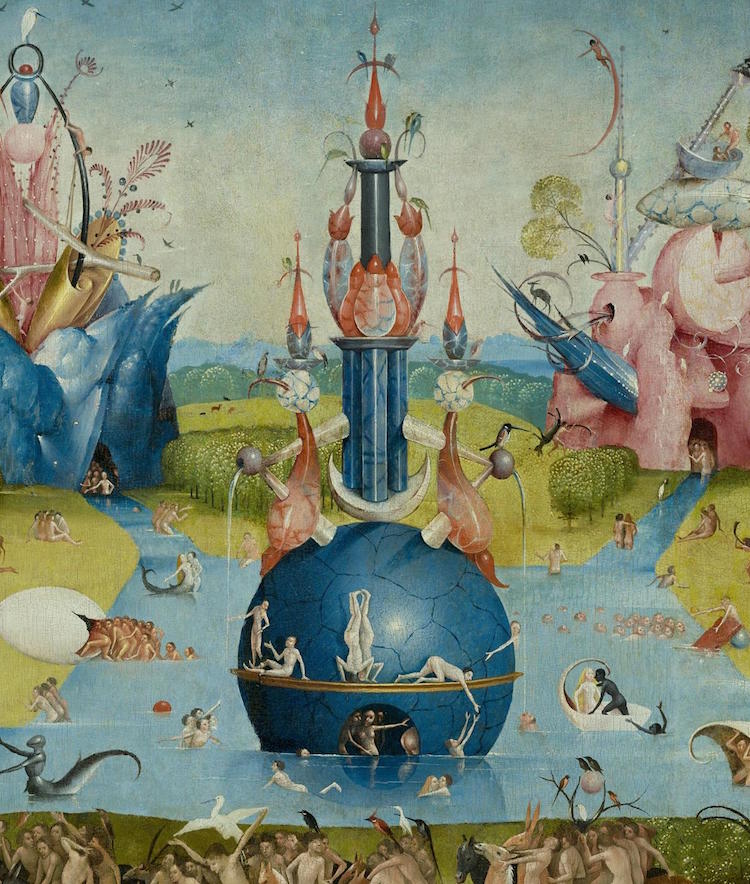
15 Facts About 'The Garden of Earthly Delights' by Hieronymus Bosch
Wikipedia Alongside the suffering, there is humour. In the central panel, we see naked people riding oversized birds including a robin, a duck and a woodpecker. Bosch might have been making a.

Bosch’s Garden Of Earthly Delights 10 Facts You Need To Know
A documentary on Hieronymus Bosch's famous triptych "The Garden of Earthly Delights", housed in the "Museo del Prado", Madrid.Written Presentation, Video Edi.

The Garden of Delights de Hieronymus Bosch Fragmentos Culturais
Confiscation ( City of Brussels, Fernando Álvarez de Toledo, 3rd Duke of Alba, 1568) Width. 384.9 cm. Height. 205.5 cm. Religion or worldview. Christianity. Different from. The Garden of Earthly Delights.
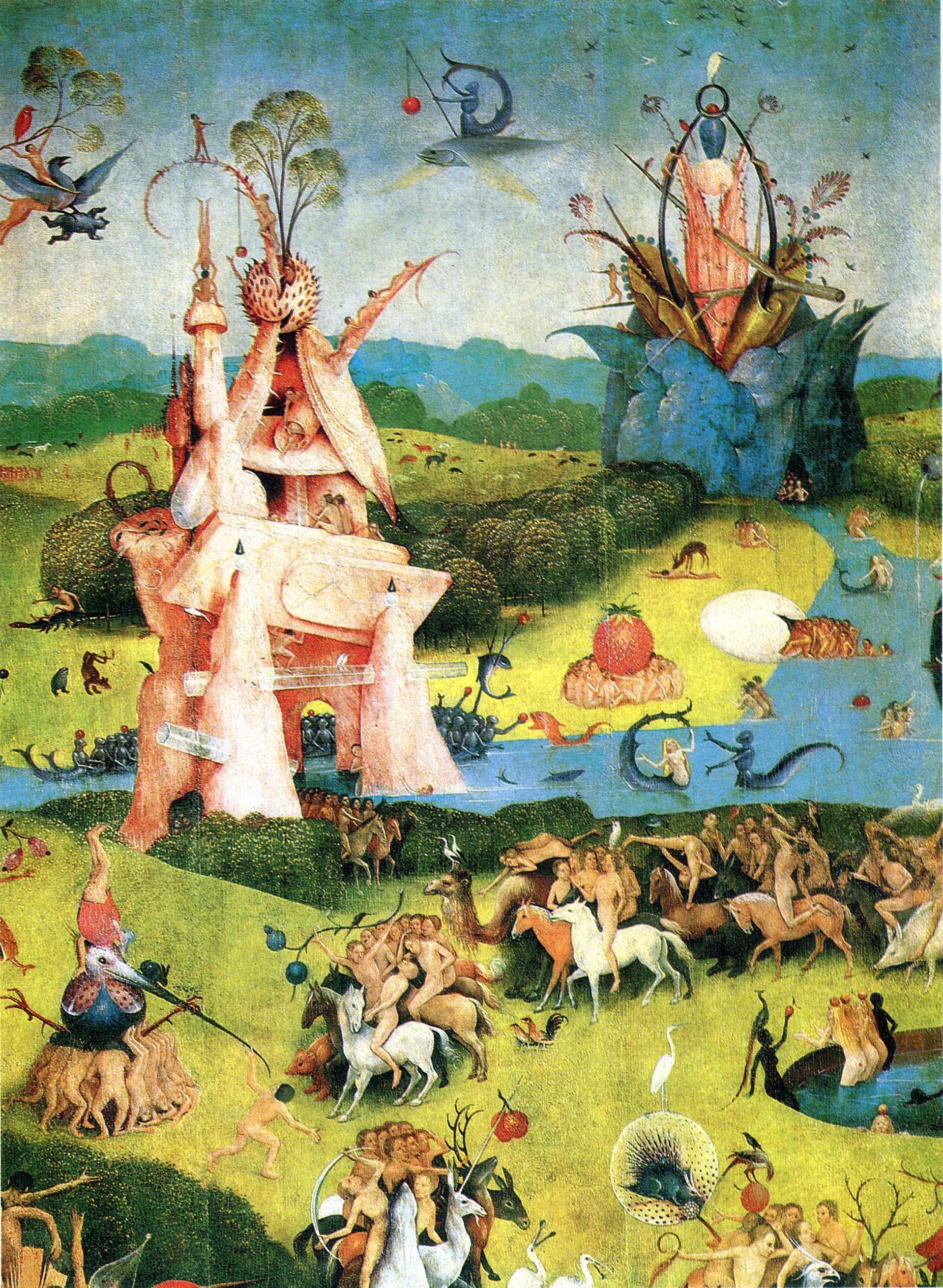
The Garden of Earthly Delights (detail), 1490 1500 Hieronymus Bosch
The Garden of Earthly Delights is the modern title [a] given to a triptych oil painting on oak panel painted by the Early Netherlandish master Hieronymus Bosch, between 1490 and 1510, when Bosch was between 40 and 60 years old. [1] It has been housed in the Museo del Prado in Madrid, Spain since 1939.

Hieronymus Bosch’s 'The Garden of Earthly Delights', A Journey from Heaven to Hell and Back
The Garden of Earthly Delights is a triptych painted by the master Hieronymus Bosch (c.1450-1516) — an Early Netherlandish painter. It has been housed in Madrid's Museo Del Prado since 1939. Dating between 1490 and 1510, when Bosch was about 40 (or 50) years old, it is one of his best known and most ambitious works.